#enchanted arthur
Text
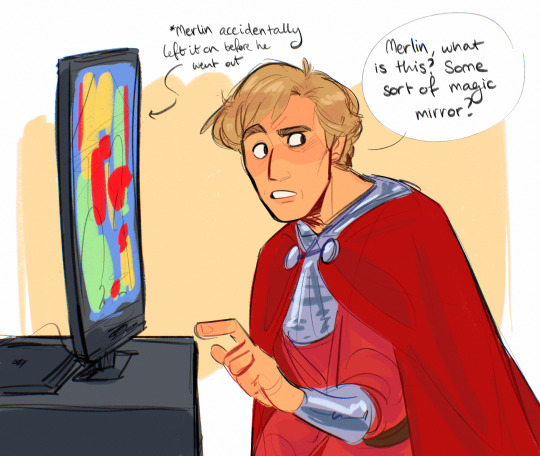


This trope would be so funny for them
#enchanted kind of#or that one that’s the Christmas one is it called Christmas Knight?#maybe I’ll have to rewatch that one just for the content#it was super cheesy and Netflix-y but like maybe that’s what I need right now#also Arthur would absolutely stab a bus with his sword#my art#bbc merlin#merlin#merlin emrys#arthur pendragon#merthur
4K notes
·
View notes
Text

And a bad@$$ enchanter he is!
#Monty Python and the Holy Grail#Tim the Enchanter#Sir Galahad the Pure#King Arthur#Sir Robin the Not-Quite-So-Brave-As-Sir-Lancelot#Sir Bedivere
490 notes
·
View notes
Text

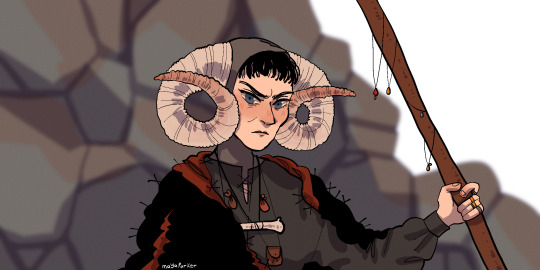
this post by @cursedmerlinedits had me overjoyed but i also really wanted to see merlin as the enchanter... so here we are
[id: two illustrations of characters from bbc merlin as monty python and the holy grail. in the first illustration, arthur is monty python arthur, and merlin is patsy. they are wearing camelot red instead of gold, and they are both grimacing. in the second image, merlin is wearing the costume of tim the enchanter, with ram's horns and a big wooden staff, in front of a rocky backdrop. end id.]
#bbc merlin#monty python#monty python and the holy grail#tim the enchanter#merlin#arthur pendragon#my art
317 notes
·
View notes
Text
The dreamlands
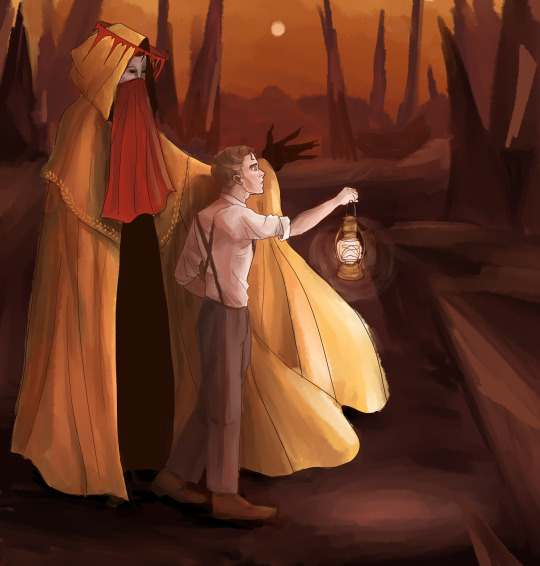
#digital art#digital illustration#malevolent podcast#malevolent#arthur lester#john doe#malevolent fanart#I need to stop being enchanted by pathetic podcast men#inkyfrog does art
190 notes
·
View notes
Text
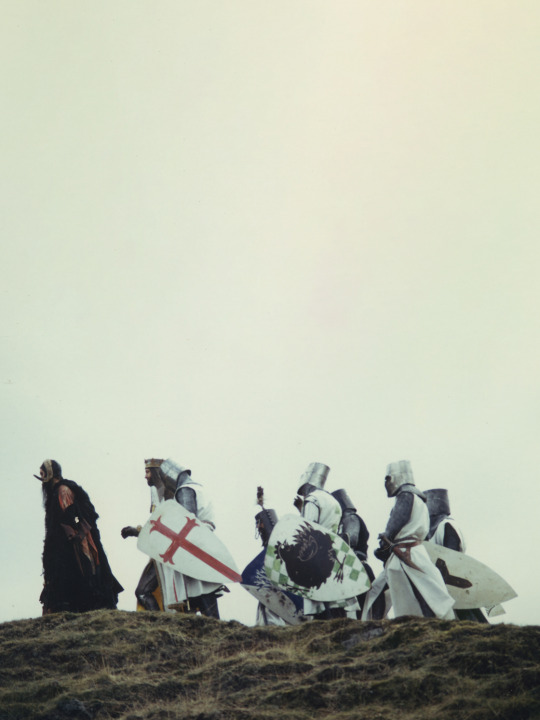
“Follow. But! Follow only if ye be men of valor! For the entrance to this cave is guarded by a creature so foul, so cruel, that no man yet has fought with it… and lived!”
Monty Python And The Holy Grail (1975)
#1975#film#movie#Monty Python And The Holy Grail#John Cleese#Tim The Enchanter#Graham Chapman#King Arthur#Michael Palin#Sir Galahad The Pure#Terry Jones#Sir Bedevere#Eric Idle#Sir Robin The Not-Quite-So-Brave-As-Sir Launcelot#Terry Gilliam#Sir Bors#The Holy Grail#Cave Of Caerbannog#Camelot#Monty Python#knights
47 notes
·
View notes
Photo

So this has been quite probably my most popular art piece of last year. Yes I did use reference as an excuse to rewatch the movie.
#muppets#the muppets#monty python#colored pencil#my work#art#fan art#kermit#fozzie bear#miss piggy#rizzo#scooter#gonzo#bean bunny#robin the frog#king arthur#sir bedivere#sir lancelot#tim the enchanter#sir robin#sir galahad#patsy#the holy grail#monty python and the holy grail
191 notes
·
View notes
Text

32 notes
·
View notes
Text

"How at the Castle of Corbin a Maiden Bare in the Sangreal and Foretold the Achievements of Galahad"
by Arthur Rackham
A 1917 illustration from The Romance of King Arthur and His Knights of the Round Table, abridged from Le Morte d'Arthur by Alfred W. Pollard, depicting Lady Elaine carrying the Grail through the halls of King Pelles' palace
#arthur rackham#art#illustration#holy grail#grail#sangreal#grail maiden#grail bearer#arthurian#mythology#knights of the round table#medieval#middle ages#elaine of corbenic#elaine#morte d'arthur#le morte d'arthur#corbenic#grail castle#enchanted#sir galahad#corbin#chivalric romance#fisher king#king arthur#sir thomas malory#thomas malory#galahad#chivalry
229 notes
·
View notes
Text
last semester I, a linguist and translator, had to study the history of English to understand its development and changes better, and only now it got me thinking that Artur must have spoken Old English or some variation of it. just think of the fact that Arthur on his coming back had to learn a new language: new grammar, new pronunciation, new vocabulary. a whole-arse language. he would have been a lost puppy, asking Merlin, hwæt seċġaþ híe? and Merlin would be on the verge of crying, because he hasn't heard this language for such a long, long time. bless his little heart.
#and then arthur becomes an oe scholar and kills it every time#huh jack so you can't remember the conjugation of béon?#that shit is elementary my little lad#merthur#although it doesn't make sense when you remember that enchantments were spoken in Old English... uh...
26 notes
·
View notes
Text
—now i’m pacing back and forth, wishing you were at my door
#always scared to talk about them cause most of my mutuals on twitter and tiktok hate them together 😭#passionately 💀#but sometimes my fear of being disliked loses 🤪#i love them so damn much#and this is their song bye#arthur morgan#charlotte balfour#charlotte balfour edit#arthur morgan x charlotte balfour#arthur morgan/charlotte balfour#rdr2#red dead redemption 2#mine#charlotte my beloved#my gf was like why would you use that unflattering shot of mary but i love it???#taylor swift#speak now#enchanted#swiftie#rdr
74 notes
·
View notes
Note
Got any enchanted Merlin fics? (Preferably without sexual content?)
1. Love is a Many-Splendored Thing by archaeologist_d (@archaeologistd)
When Merlin mistakenly intercepts a love spell meant for Arthur, Arthur thinks it’s funny—until it isn’t. As Merlin gets sicker and sicker from love unrequited, it’s up to Arthur to try and find a way to keep Merlin from dying.
~~~
this is my top recommendation for this genre
2. Lovesick by vintagelilacs (@vintage–lilacs)
Arthur’s heart thumped hard in his chest. If Merlin ingested the potion, he would fall in love with the first person he laid eyes on. He would fall in love with Arthur.
Arthur opened his mouth, a warning perched on his tongue. He didn’t let it fall.
~~~
i don't know if you'd count this as enchanted, but he did ingest a love potion sooo
3. only love can thaw a frozen heart (and some are worth melting for) by borealisaurora
It seems like every magic user in Albion knows that Merlin is besotted with Arthur, and many believe that Merlin and Arthur need to get together in order for their Destiny (TM) to be fulfilled. When a witch takes it upon herself to speed this along and puts curse on Merlin that requires True Love’s kiss to lift it, chaos ensues.
~~~
this fic makes me smile. 11/10 would recommend
#bbc merlin#merthur fic rec#merthur fic recs#merlin#merthur fanfic#merthur fanfiction#merthur fic#merlin x arthur#merthur#love potion au#love spells#merlin fic#enchanted merlin#enchanted!merlin#merlin bbc#merlin emrys
33 notes
·
View notes
Text
i lose 839338287239 years off my life every time arthur trusts agravaine omfg
#his easily manipulatable ways have enchanted me bUT AT WHAT COST.#bbc merlin#arthur pendragon#ignore me
51 notes
·
View notes
Text
my favs (video games)

Red Dead Redemption 2 (2018)

2. Life is Strange (2015)

3. Sims 4 (2014)
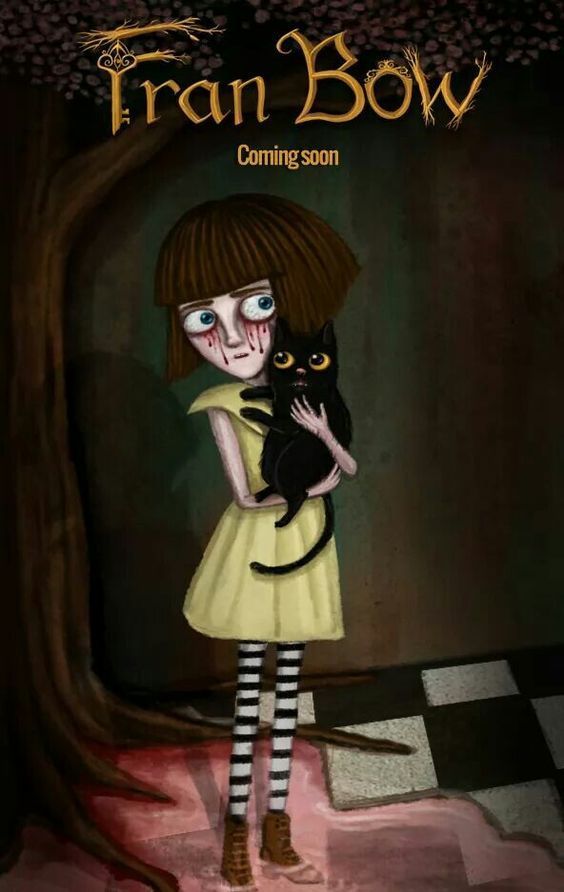
4. Fran Bow (2015)

5. Sally Face (2016)

6. Life is Strange Before the Storm (2017)

7. Minecraft (2011)

8. Sims 3 (2009)

9. The Legend of Zelda Twilight Princess (2006)

🤭childhood game
10. Disney Princess Enchanted Journey 🥰 (2007)
#red dead redemption 2#life is strange#fran bow#Sims 4#Sally face#Life is strange before the storm#minecraft#Sims 3#legend of zelda#twilight princess#Disney princess enchanted journey#chloe price#arthur morgan#dutch van der linde
18 notes
·
View notes
Text
fic where "physical embodiment of magic" merlin who accidentally enchanted the sword so that it could in fact only be pulled free by a true king of camelot. And of course Arthur pulls free the sword without merlin's magic...
cue merlin who doesn't know he enchanted the sword to be like that, currently experiencing a disorienting mix of pride, confusion, panic and joy
because if merlin didn't do it...and morgana probably didnt do it...and there's no other sorcerers who could've done it...then how the fUCK-
cue merlin incorrectly assuming arthur has some amount of dormant magical power. merlin who used to joke that arthur's way of inspiring people is magical...suddenly making the incorrect assumption that it was not in fact a joke
#merlin: “wait...i didnt do that”#“WAIT WHO THE FUCK DID THAT”#merlin @ arthur: “MAGIC”#arthur: ??#bonus points if arthur DID actually turn out fo have domant magical power#BUT it still wasnt him that enchanted excalibur#arthur pendragon#bbc merlin#merlin#merthur#arthur pendragon has magic
29 notes
·
View notes
Text
The fantasy in modern Arthuriana (2)
This is a loose translation of Claire Jardillier’s article “Les enfants de Merlin: le merveilleux médiéval revisité” (The children of Merlin: Medieval magic revisited), for Anne Besson’s study-compilation.

II/ Wizards and witches
The fantastical elements within modern rewrites are often embodied in the most visible way by a few key characters. First and foremost among this magical cast is, of course, Merlin the enchanter, but also regularly the bard Taliesin, despite his lesser presence within the Matter of Britain. Taliesin indeed only appears obviously tied to Arthur within the Welsh sources, especially “Preiddu Annwn”, where he is part of the expedition led by Arthur to steal away the cauldron of resurrection from the Otherworld. We can make the hypothesis that is it because of the historical rewrites of the Arthurian legends that the character of Taliesin gained such an importance, since it is in the Welsh sources that he is most frequently seen, sources that modern rewriters especially love due to judging them more ancient and thus more “authentic” and more Celtic than the chivalry romances and knighthood romans of France and England. Since Wales resisted more strongly to the Saxon invader, then to the Normand influence, modern novelists like to use the “Mabinogion” and the Welsh poems to historicize their Arthur. Taliesin usually stays within his traditional role of bard, in accord to the historical and bibliographical information we have about him. While quite brief, these information naturally designate him as the symbol of the Arthurian legend within a “realistic” rewriting, as a character between the history and the myth.
[In the “Hanes Taliesin” mainly, translated by Lady Charlotte Guest and which follows her “Mabinogion” translations, we discover the two births of Gwyon Bach/Taliesin, is exploits as a bard within the court of prince Elphin, and some of his poems. The historical Taliesin seems to have been a bard at the court of Urien Rheged during the 6th century, and the poems attributed to him were preserved within the “Llyfr Taliesin” (The Book of Taliesin). It notably contains the famous “Cat Godeu” (Battle of the Trees) and the previously mentioned “Preiddu Annwn”. These Welsh poems, like many others, were translated and published by William F. Skene within his “Four Ancient Books of Wales”]

As such, within Fay Sampson’s “Daughter of Tintagel” cycle he becomes one of the five narrators that relate the life of Morgan. A first-person narration that give a voice to a secondary character of the medieval corpus is a fundamental trait of modern Arthurian literature : as such, we can hear Kai, Pelleas, Bohort, Rhys or Bedwyr, characters whose point of view is rarely given in legends, alongside the manifestation of more novel characters, such as Derfel, a shadowy warrior turned saint in the 6th century who narrates Bernard Cornwell’s “Warlord Chronicles”. [Respectively, Kai is heard within Phyllis Ann Karr’s The Idylls of the Queen and John Gloag’s Artorius Rex ; Pelleas within Stephen R. Lawhead’s Arthur and Courtway Jones’ In the Shadow of the Oak King ; Bohort within Dorothy Jane Roberts’ Launcelot my Brother ; Rhys within Gillian Bradshaw’s Kingdom of Summer ; Bedwyr within Catherine Christian’s The Sword and the Flame and Stephen R. Lawhead’s Arthur.]
Within Stephen Lawhead’s works, the role of Taliesin is more developed since he becomes the father, and so the precursor of Merlin (within Marion Zimmer Bradley’s, he is Merlin’s first incarnation). In his trilogy, the bard Talesin paves the way for Merlin, who will surpass his father in his role as the companion of the major hero, Arthur king of Britain. It is precisely this dimension that is often used by modern Arthurianists. [Stephen R. Lawhead wrote in reality five novels, the last two being a flash-back to episodes from between book 2 and 3. This Arthurian cycle is especially concerned with the questions of filiation, legitimacy and predestination. As such, Taliesin announces and foreshadow the coming of his son, a sort of messiah for the Britons, but Merlin himself works for the coming of Arthur, the savior of Britain as much on a spiritual level (the writings of Lawhead are distinctly Christian in tone) as on a political level. It is probably why we also see here a weird and exceptional element introduced, as Arthur is made the posthumous son of Aurelius, and not the bastard of Uther. Here Arthur is the product of an union blessed by the Church, and as such he descends from the first High-King, not from his replacement out of a “side-branch” of the family.]
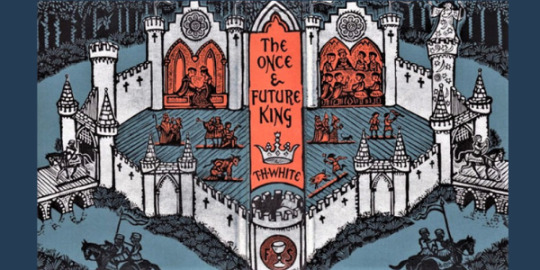
We also have to note that modern rewrites love to tell what happened during the life of characters in the form of prequels – in this case, the youth of Merlin, which is rarely detailed in the Middle-Ages outside of his birth and his encounter with Vortigern. It was the case within Mary Stewart, the first author who was concerned with the wizard’s youth, and who sems to have deeply marked modern Arthurianists, since the same pattern can be found in other novels, including those of Stephen Lawhead. This concern with “what happened before” is not exclusively Arthurian, and can be seen within other contemporary sagas – Star Wars, Indiana Jones, Blueberry… It is a tradition as old as the various “Childhoods” texts of the Middle-Ages. [Mary Stewart wrote “The Crystal Cave”, “The Hollow Hills” and “The Last Enchantment”. As a proof of the intertextuality of Arthurian novels, “the last enchantment” is an expression reused and exploited by Bernard Cornwell in the last part of his trilogy, where a dying Merlin, entirely devoured by his own student Nimue, preserves a “last enchantment” to allow Arthur and a few others to escape the battle of Camlan]
Be it Taliesin or Merlin, the first way the question of the magic implants itself within the narrative device is about the relationship between the king and his wizard. The magical element is thus tied to the political power, weighed down by a reality which, if not historical, is at least coherent. This heirloom is directly tied to the medieval sources, even if it is not obvious at first. The idea of an Arthur raised as a boy by Merlin owes much more to T.H. White’s “The Once and Future King” than to the medieval texts, where only a slow and complex evolution allowed the association of those two characters now seen as undividable. [White’s work is a set of five novels, first published separately, then compiled as one work in the 50s, and to which the last novel, The Book of Merlin, was added in 1977. This work is a precursor of all the rewrites that happened from the 60s onward, especially the first book that tells of Arthur’s childhood and his education by Merlin. It was a best-seller, and the adaptation of this first novel into an animated movie by Disney (63’s The Sword in the Stone) amplified its impact]. Indeed, within Geoffroy of Monmouth, Merlin and Arthur follow each other in the text… but never meet. It was within later rewrites, Wave, Lawamon, and in the French “Lancelot-Graal”, that the king and the enchanter will develop a more intimate relationship, culminating within Malory’s Morte Darthur. [In Geoffroy’s tale, the two characters at least never meet within the context of the tale. A doubt is allowed since in most of the manuscripts, Merlin makes a brief apparition at the very end of the “Historia”, where an “angelic voice” talks to Cadwallader, telling him that “God wishes that the Britons stop ruling within Britain until the moment that Merlin prophesized to Arthur” ; this sentence implies that Merlin might have been the king’s prophet, a role that will become more and more obvious in later rewrites]
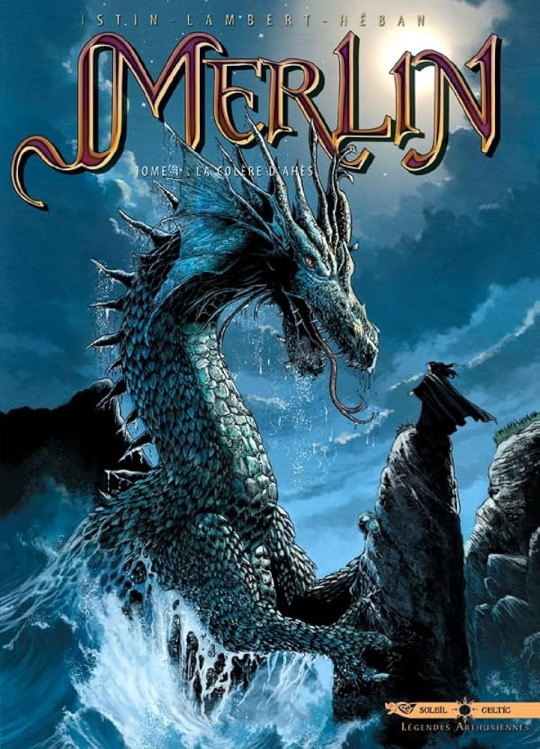
This is due to the two characters, Merlin and Arthur, originally belonging to two distinct traditions. Once they became connected thanks to Geoffroy’s Historia Regum Britaniae, the two characters got closer and closer, and gained many interactions, just as Merlin’s interventions became more and more fantastical. This is very clear when we look at an episode shared by all the medieval Merlinian tales: the moving of the stones of Ireland to create Stonehenge. Within Geoffroy’s, it is a mechanical process. Within Wace, an unexplained way. Finally, within Lawamon, it becomes a powerful spell that makes the stone “as light as feathers”. Modern authors follow this tradition and often reuse this episode, or a similar one, in what we can call “the motif of the dancing stones”. In the same way, within Lawhead’s novel, a child Merlin proves his powers to an assembly of druids by making the stones of a cromlech levitate. Stonehenge plays an important role for Cornwell: it becomes the place of a ghost-filled ceremony during which Merlin gives Excalibur to Arthur. Even among comic books, Merlin makes stones dance before amazed mortals. [It is within the first volume of the BD series “Merlin” by Jean-Luc Istin and Eric Lambert, “La colère d’Ahès” (The Wrath of Ahès). The dancing stones of Istin and Lambert are quite similar to the ones described by Lawhead, and the scenarist confessed having read the “Pendragon Cycle”. We find in this “Merlin” the same habt of syncretizing religions as within Lawhead’s works (father Blaise is a former druid, and offers Merlin as a symbol of the union of religions).]
We find back here what we said before: the historicized Arthurian literature of the 60s-80s greatly deprived the medieval text of their fantasy, and since the 80s-90s we have a slow re-appropriation of the medieval magic within novels that still, however, wish to be historical. In other terms – the stones are dancing again, but they are always dancing in a mentioned 6th century.
Before Lawamon, Merlin only acted during the lifetime of Aurelius and Uther, before disappearing for no reason after Arthur’s birth. However, the encounter between those two historical characters was too tempting to be avoided, and we can see a true shift between Geoffroy and Malory (for example), which today leads to the many tales in which Merlin acts as the teacher, tutor, or even adoptive father of Arthur. This filiation is helped by two elements. On one side, that is an elliptic moment covering Arthur’s childhood in medieval texts, and we go from him as a baby to him as a young fifteen-year old king. [We find within Lawamon the beginning of an explication: child-Arthur was raised by elves at Avalon. This idea was reused by Parke Godwin within the novel “Firelord”.] On the other hand, we can see that all of his next of kin die around the same time. In front of this absence of parents, it is very tempting to remove Ector (the father of Kay and the tutor of the royal child in the tradition) and put in his place a more familiar and impressive character, Merlin the wizard.
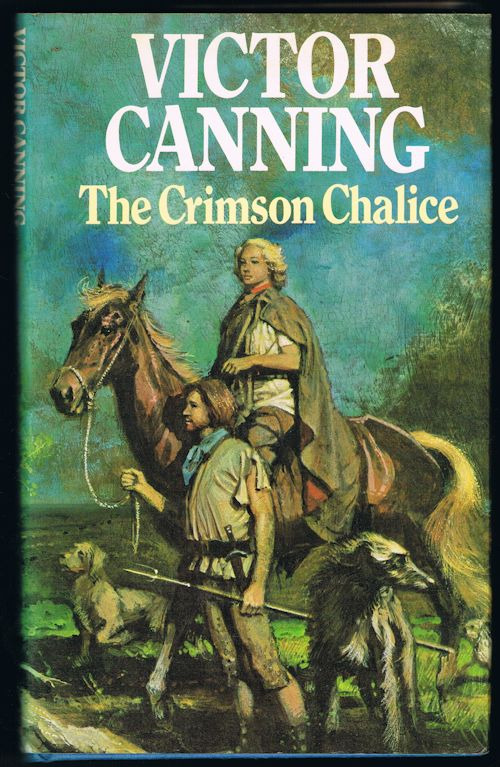
We talked before of the habit of “prequels”: the cyclical temptation of modern novels, which in a way mimics the Arthurian medieval tradition of a condensed and fractioned writing of the whole Arthurian legend (usually in three volumes), favorizes the writing of the origins, of the “before Arthur”. The introduction of Merlin, but also of Taliesin, proves this attraction for what Anne Besson calls an “Arthurian prehistory”. For Stephen Lawhead, the link between the various generations (Taliesin, father of Merlin, Merlin spiritual father of Arthur) insists upon the greatness and the predestination of the king of the Britons, the bearer of Light. Even when the Arthurian tale is limited to a single novel, it is not unusual to see it begin with the generation before Arthur: it was the case with Victor Canning’s “The Crimson Chalice”, where a third of the novel follows the events that led to Arthur’s birth (even though here Arthur’s parents are named Tia and Baradoc, and bear no resemblance to Igraine or Uther).
To all the reasons described above, we must add the fictional temptation of having characters coexisting to allow a powerful confrontation. But this temptation also bears a prevalent trait of the modern Arthurian fiction, and of its dialogue with the sources. Indeed, it is not uncommon to see a rearrangement, to various degrees, of the links that traditionally unite the characters. As such, in most sources Ygerne is the wife of Gorlois and the mother of Arthur, but she can be his half-sister and the mother of Medraud within Rosemary Sutcliff’s “Sword at Sunset”. The same Ygerne becomes Gorlois’ daughter, not his wife, in Stephen Lawhead’s work, as the author plays with the writing of the myth, has his Merlin-narrator laugh about the mad rumors that circulated about the siege of Tintagel “I have even heard it said that Ygerna was Gorlas’ wife – Imagine that!”). The marvelous does not escape this kind of more-or-less extreme shifts: the case of the female characters, of their relationship to magic, and of their role within history is especially revealing.
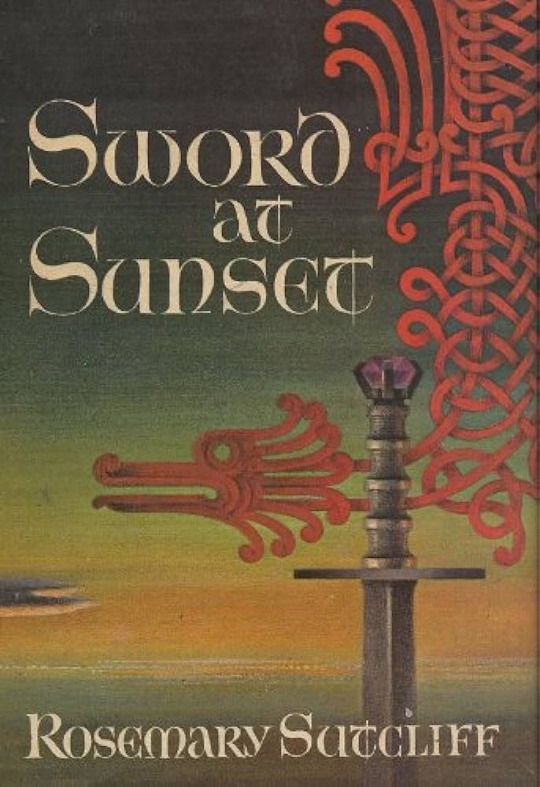
#arthuriana#fantasy#arthurian novel#fantasy novel#arthurian literature#translation#merlin#king arthur#taliesin#magic#arthurian rewrites#merlin the enchanter
10 notes
·
View notes
Text
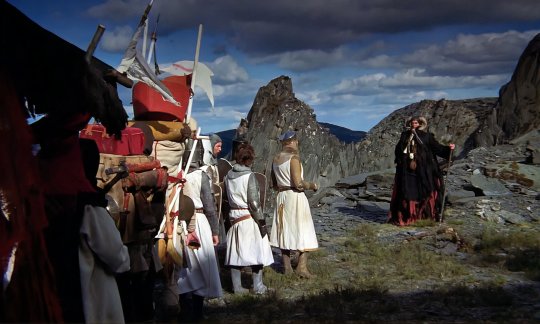
“What manner of man are you that can summon up fire without flint or tinder?”
“I am an enchanter.”
Monty Python And The Holy Grail (1975)
#1975#film#movie#Monty Python And The Holy Grail#Terry Gilliam#Patsy#Eric Idle#Sir Robin The Not-Quite-So-Brave-As-Sir Launcelot#Terry Jones#Sir Bedevere#Michael Palin#Sir Galahad The Pure#Graham Chapman#King Arthur#John Cleese#Tim The Enchanter#The Holy Grail#Cave Of Caerbannog#Camelot#Monty Python#knights
83 notes
·
View notes